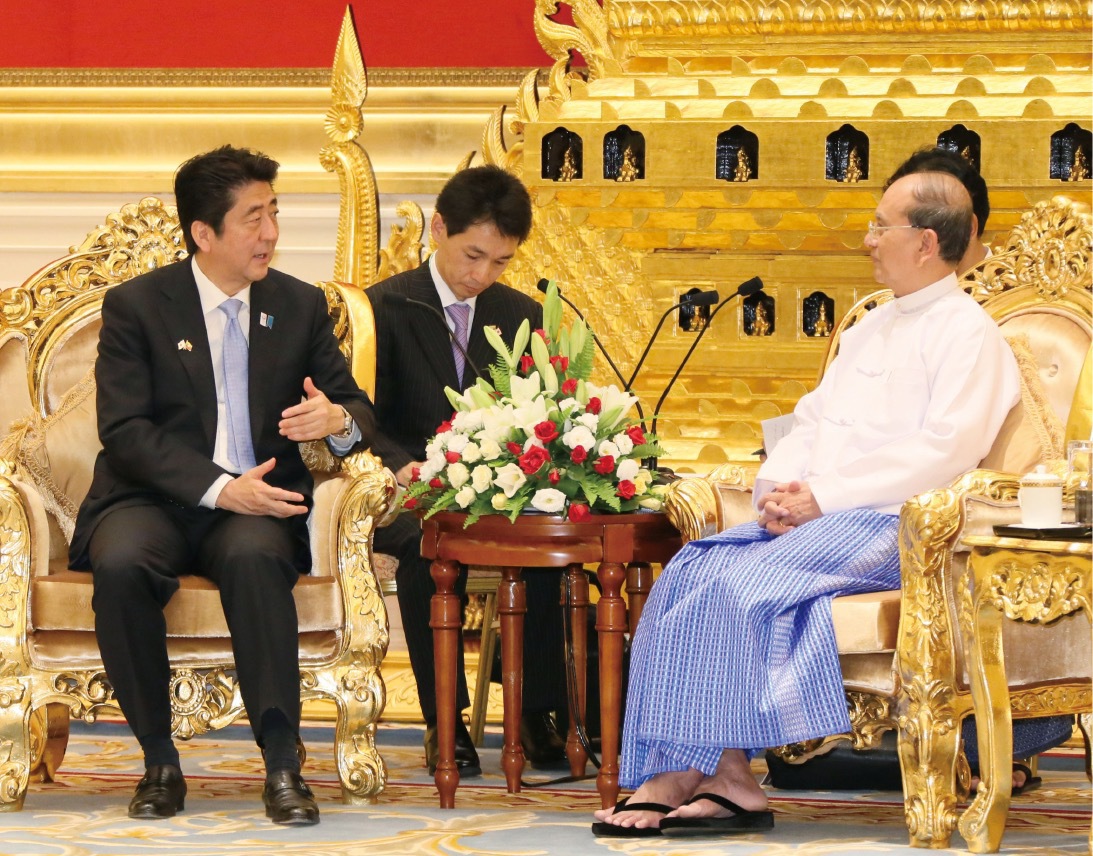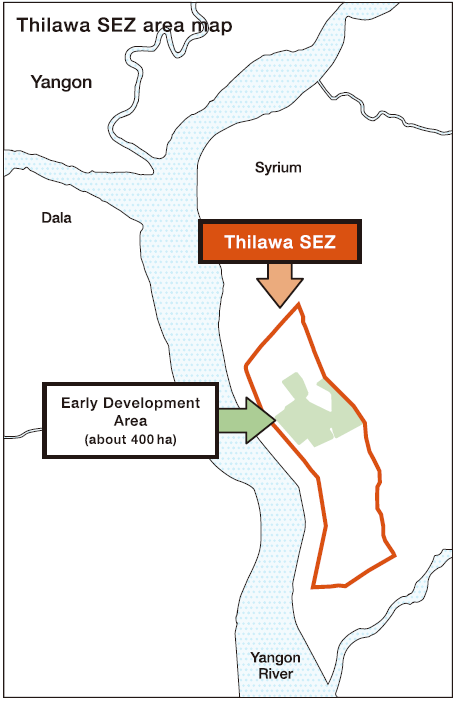Japan and Myanmar have enjoyed diplomatic relations since a bilateral peace treaty was concluded 60 years ago, and the two countries have remained important partners. Due to political problems, Japan had to temporarily suspend bilateral ties with Myanmar, but when the civilian government was installed in 2011, the restrictions were lifted and ties between the two nations were renewed. Soon after the Abe administration was inaugurated, Deputy Prime Minister Taro Aso visited Myanmar in 2013. During his visit the Japanese government pledged that it would waive about JPY 500 billion (approximately USD5.74 billion) of Myanmar’s debt and join forces with Japanese corporations to provide aid to the country with a focus on developing social and industrial infrastructure.
A typical example of such aid is the Thilawa Special Economic Zone (SEZ). The objective of this project is to build an industrial park on par with those in neighboring countries, so as to attract foreign companies and boost employment by fostering industry. And the government of Japan is helping to develop its infrastructure. In May 2013, Prime Minister Abe visited Myanmar for summit talks—the first time in 36 years that a prime minister of Japan had visited. In the talks, he emphasized the importance of developing infrastructure and committed to providing around JPY20 billion (approximately USD200 million) to improve nearby power and port facilities. Japanese firms are collaborating with Myanmar companies to build the industrial park within the SEZ. The nearly 400-hectare initial phase is scheduled to be operational by summer 2015 and is expected to employ 50,000 to 60,000 people.
Japan is also providing aid to upgrade the railway connecting the two biggest cities in the country: Yangon in the south and Mandalay in the north. As Myanmar’s economy and population grow, the need to transport people and cargo via rail increases. But the outdated system is slow and has a high risk of derailment. This aid will increase the flow of goods and people and boost Myanmar’s economy. In addition, Japan is contributing to a wide range of other projects throughout Myanmar, including upgrading the power grid that connects the north and south, improving telecommunications facilities, and expanding irrigation systems. Enhancing this infrastructure will contribute not only to Myanmar but also to the economy of Japan, as improving the business environment of the country will create a new overseas hub for Japanese firms.
Myanmar’s economy is growing rapidly and many aspects of the infrastructure are still in need of development. Therefore aid from other countries is essential. Japan’s active role in providing aid will benefit both countries. We hope that the government and corporations of Japan will continue to work together to further strengthen the friendship and cooperation between the two nations.
Tomodachi Menu
- Top
- Previous Issues
- Topic
- Country/Region
Close

- Top
- Previous Issues
- Topic
- Country/Region
-
- Asia
-
- Pacific
-
- North America
-
- Latin America and the Caribbean
-
- Europe
-
- Middle East
-
- Africa
-
- Other Area
-
-
Tomodachi Autumn 2014

































































































































